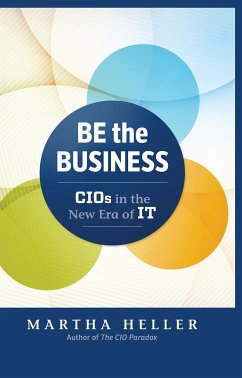
The Myth of Doing More With Less
Versandkostenfrei!
Versandfertig in über 4 Wochen
28,99 €
inkl. MwSt.
Weitere Ausgaben:

PAYBACK Punkte
14 °P sammeln!
Information dominates our society and the way we do business. Organizations use electronic mail (E-mail) to communicate worldwide with clients. The Internet and World Wide Web (WWW) sites are flourishing, with information accessed with amazing speed across worldwide links. The Air Force has even cited Information Superiority as one of its core competencies. In many organizations, use of the network and Internet have become indispensable, resulting in a demand they be 100 percent reliable. Leadership has believed that information technology (IT) and small computer networks will save time and ma...
Information dominates our society and the way we do business. Organizations use electronic mail (E-mail) to communicate worldwide with clients. The Internet and World Wide Web (WWW) sites are flourishing, with information accessed with amazing speed across worldwide links. The Air Force has even cited Information Superiority as one of its core competencies. In many organizations, use of the network and Internet have become indispensable, resulting in a demand they be 100 percent reliable. Leadership has believed that information technology (IT) and small computer networks will save time and manpower, allowing them to do more work with less people. In the rush to implement the technology, leaders and managers have failed to consider how IT, specifically small computer networks, impacts an organization's culture and processes. It is not enough to simply install a network and expect immediate increases in productivity. Processes will and should adapt to IT's characteristics and advantages. A survey conducted within Air Command and Staff College illustrates how organizations must consider certain factors when implementing IT, including its impact on the mission. Although IT is shown as an enabler in getting the job done, results show potential negative behavior which can impact the organization. To prevent this negative impact, leaders must take a long-term strategic view to successfully implement IT for its full benefit instead of throwing the latest software and hardware at the same old processes. This work has been selected by scholars as being culturally important, and is part of the knowledge base of civilization as we know it. This work was reproduced from the original artifact, and remains as true to the original work as possible. Therefore, you will see the original copyright references, library stamps (as most of these works have been housed in our most important libraries around the world), and other notations in the work. This work is in the public domain in the United States of America, and possibly other nations. Within the United States, you may freely copy and distribute this work, as no entity (individual or corporate) has a copyright on the body of the work. As a reproduction of a historical artifact, this work may contain missing or blurred pages, poor pictures, errant marks, etc. Scholars believe, and we concur, that this work is important enough to be preserved, reproduced, and made generally available to the public. We appreciate your support of the preservation process, and thank you for being an important part of keeping this knowledge alive and relevant.












